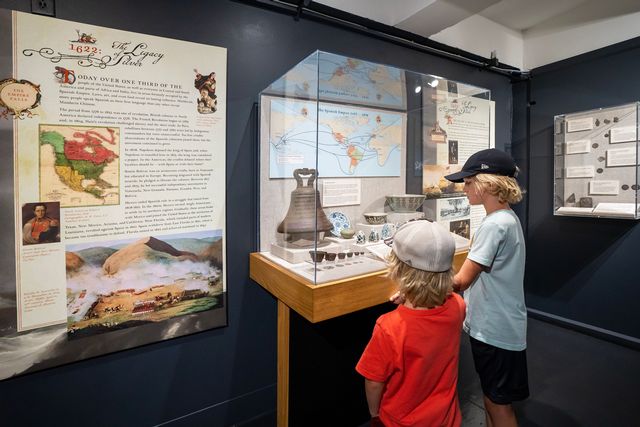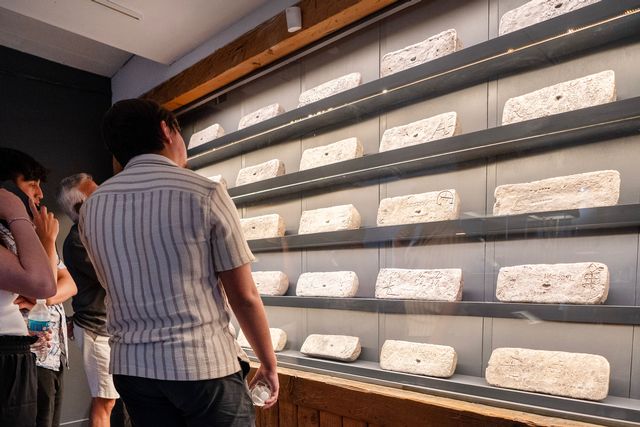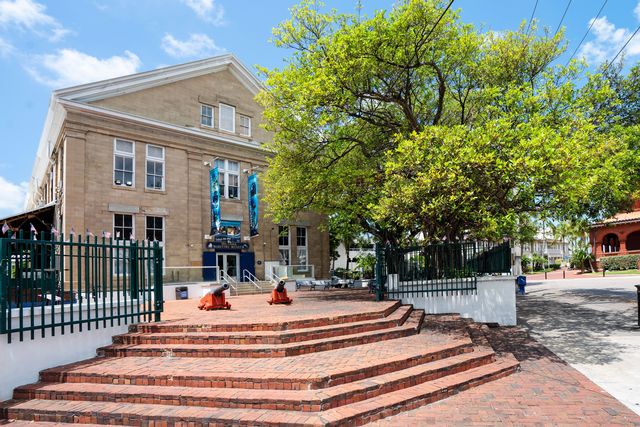Key West Museum Exhibit Provides New Insights into 1622 Shipwrecks
KEY WEST, Florida Keys — More than 400 years after two majestic galleons from Spain’s 1622 fleet sank off Key West, a comprehensive new exhibit tells their story in the context of their time.
Featuring never-before-displayed artifacts from the Nuestra Señora de Atocha and Santa Margarita shipwrecks, as well as personal stories of passengers and others connected to the galleons, “1622: Wealthy World” recently debuted at Key West’s Mel Fisher Maritime Museum.
The Atocha and Margarita, carrying gold, silver and other riches from Spain’s New World colonies home to enrich the kingdom’s coffers, were among a fleet of 28 vessels shipwrecked in a 1622 hurricane. Both galleons’ wrecksites were discovered off Key West in the 1980s by salvager Mel Fisher and his crew after a long and grueling search.
The museum originally established by Fisher — today an internationally recognized center for preservation and research — is believed to contain the richest single collection of 17th-century maritime and shipwreck antiquities in the Western Hemisphere. But only now, following an expansion that doubled the facility’s exhibit space, has it become possible to display the items from the 1622 wrecks within a wider framework of New World and Old World cultures.
“The new exhibit shows people that the story is much bigger than the 1622 fleet,” said Melissa Kendrick, president and CEO of the museum. “It also becomes a much more human story.”
According to Kendrick, the shipwrecks have yielded immeasurable information about the Spanish empire, Spain’s colonies and everyday life aboard ship in the 17th century.
Exhibit elements explore everything from the colonial culture of Peru, where indigenous people mined precious metals and craftsmen forged gold and silver items carried on the Atocha and Margarita, to Spain’s development of a flourishing system of worldwide trade and the wealth of the galleons’ aristocratic passengers.
Artifacts on display include huge cannons and rare hand weapons used by soldiers to defend the 1622 fleet; cooking implements and ceramic food and water storage jars carried on the vessels; the tools of the ships’ on-board surgeon and carpenter; the earliest glass tumbler ever found in the New World; a mirror, candlestick, scissors, silver plates and other belongings of passengers; a never-before-seen rail from the hanging bed of a senior ship’s officer; and treasures such as a priceless emerald cross, gold and silver coins, a thick double chain whose forged links contain nearly two pounds of gold, and 24 silver bars weighing approximately 70 pounds apiece.
Madeleine Burnside, the museum’s chief curator, said the rarest article in the new exhibit is a silver Incan heraldic plate, engraved with a condor holding an Incan coat of arms, that dates back to 1620 and is believed to be the only one in the world. Displayed nearby is a carefully preserved 17th-century book — one of just two copies in existence — that documents early Spanish attempts to salvage the Atocha shipwreck.
Also featured is a dynamic model of the Atocha in its final moments, meticulously crafted based on archaeological and historical evidence. Its portrayal of waves breaking over the ship and people attempting to save themselves underscores the poignant personal nature of the new exhibit.
“Once our research uncovered the stories of the people connected to the Atocha and Margarita, that compelled us to rethink the exhibition from their point of view — to present the objects in the context of the people and their wider world,” said Burnside.
The permanent exhibit “1622: Wealthy World” can be viewed at the Mel Fisher Maritime Museum, 200 Greene St. The museum opens at 10 a.m. daily and the last visitors are admitted at 4 p.m. Guided behind-the-scenes tours of the facility’s artifact conservation lab can be booked at 11:30 a.m. and 2 p.m. weekdays.
Exhibit information and ticketing: melfisher.org
A model of the sinking of the Spanish galleon Nuestra Señora de Atocha is a focal element of the Mel Fisher Maritime Museum's new exhibit. Photo: Carol Tedesco
Young visitors to Key West's Mel Fisher Maritime Museum view artifacts from the museum's new exhibit. Photo courtesy of Mel Fisher Maritime Museum
Visitors to Key West's Mel Fisher Maritime Museum view a display of 24 silver bars weighing about 70 pounds apiece. Photo courtesy of Mel Fisher Maritime Museum
Key West's Mel Fisher Maritime Museum at 200 Greene Street. Photo courtesy of Mel Fisher Maritime Museum





